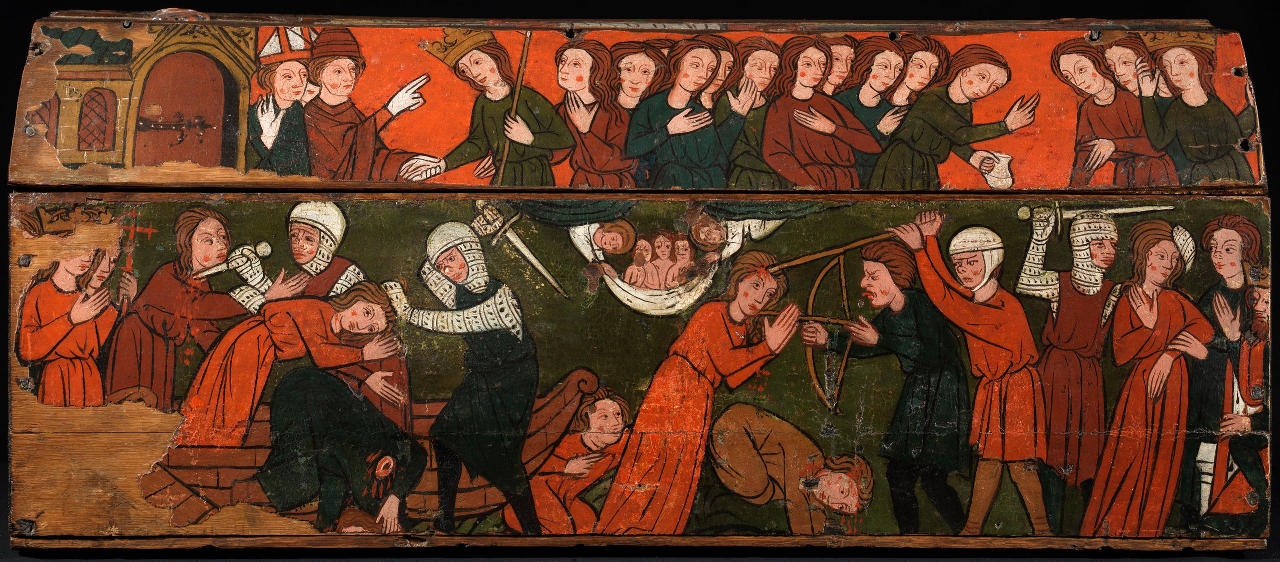
Register a SNAP EBT card with Amazon
'Shrine of St. Odilia'. Abbey of MariŽnlof, Kerniel, Belgium.

A larger image of the 'Shrine of St. Odilia'. Abbey of MariŽnlof, Kerniel, Belgium.


Shrine of St. Odilia
Object number: 87548
Type or object: reliquary
Institution place: Kerniel
Institution: MariŽnlof Abbey
Creator: unknown (painter)
Date: 1292
Provenance: Couvent des Croisiers [Huy]; Hayweghen, Lambertus [collection] [Borgloon]; Church Saint Pantaleon [Kerniel]
Material: oak
Technique: painted
Place of production: Maasland
Dimensions: length: 80 cm, height: 34 cm, width: 23.5 cm.
Digital reference: Erfgoedplus.be
© KIK-IRPA, Brussels
Item: 'Shrine of St. Odilia', Meuse region, Abdij MariŽnlof van Colen, Kerniel, Borgloon, province of Limburg, Belgium.
Holding Institution: Abbey of MariŽnlof
From: Couvent des Croisiers, Huy, LiŤge, Belgium
Dating: 1292
The Shrine of St. Odile is the oldest known example of a painting on wood in the Low Countries (present day Belgium and the Netherlands).
It was made by an unknown Mosan painter for the Couvent des Croisiers in Huy, province of LiŤge, Belgium, where it was kept until the French Revolution. In 1828 a 'Crosier' with family ties in the Limburg village of Borgloon donated the piece of art to the parish church of Kerniel. Around this date the priest of Kerniel tried to make the shrine fit into a smaller niche, so he cut the upper part, mutilating it.
In 1933 the shrine came into the abbey's (Abdij MariŽnlof van Colen) posession.
The painting on the shrine tells the story of the Romano-British princess St. Odile, who, together with St. Ursula and 11,000 other virgins sailed on a pilgrimage to Rome. Arriving at the gates of Cologne they were all killed in a dreadful massacre by Huns besieging the city around 383 AD.
The Huns are all portrayed wearing typical late 13th century equipment for French/German sergeants: long-sleeved mail hauberks with integral mittens and a mail coif, but lacking the mail chausses for the legs. The two Huns on the left wear cervelliŤres (small rounded helmets) over their mail coifs.
Source: Roel Renmans